In the creative heart of the city
For years, clothing retailers Sean and Lisa Blanchard dreamed of striking out on their own, starting a hipster threads shop with its own embracing vibe.They wanted a space where they could treat customers like old acquaintances, helping them find just the right clothes and fashion curios, hoping they’d return as regulars, and perhaps as friends.
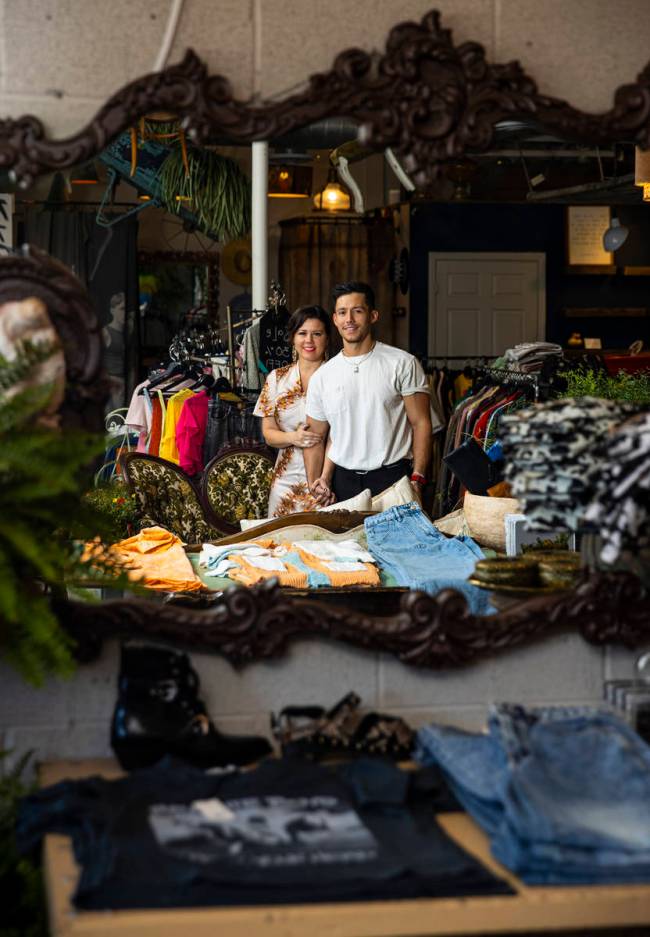
Both were veterans of the retail chain Buckle, living and working in Las Vegas. They were happy, learning a lot about creating and keeping customer relationships. But in reflective moments that dream of independence re-emerged like a daunting challenge. “Then one day we just made the call,” said Sean, a lean, angular 35-year-old. “We said, ‘Let’s take the leap. Let’s bet on ourselves.’ ” But where, in 2018, could they find a spot they could afford, a landlord willing to bet on two 30-somethings with a plan for a niche clothing store, and a community of like-minded small-business owners? The answer wasn’t far from their downtown digs: the Las Vegas Arts District, a spread of timeworn industrial blocks that has persevered through decades of tough times, social isolation and economic fallout to emerge as a small village of like-minded dreamers. Officially known as 18b, a reference to the neighborhood’s original 18 blocks, the district centers roughly on the intersection of Charleston and Main, and — according to the city’s mapping — is bounded by Hoover, Fourth Street, Colorado Avenue and South Commerce. But the Arts District as a community, energy center, and state of mind easily overflows those boundaries.
Everywhere you see a spirit of urban renaissance. Most vivid are the murals and street art in every style imaginable. By day, tourists, businesspeople and kids on skateboards flow past the open businesses and “For Lease” signs along Main Street. Some are there for lunch at longtime fixture Casa Don Juan, to grab a slice of pizza at Good Pie, to shop for antiques. After dark, pedestrians remain. The shops may be closed, but there’s a buzz from outdoor seating at various microbreweries, the aroma of smoked pork from restaurants that stay open late to meet the demand.
There’s still a transitional feeling on some of the neighborhood’s side streets and alleys. Alongside new eateries, stores and salons are stalwart car repair and upholstery shops that add a different texture to the streetscape. Here, old meets new, the young rub shoulders with longtimers, and mechanics and other blue-collar types take what might be a last stand against the influx of new merchants.
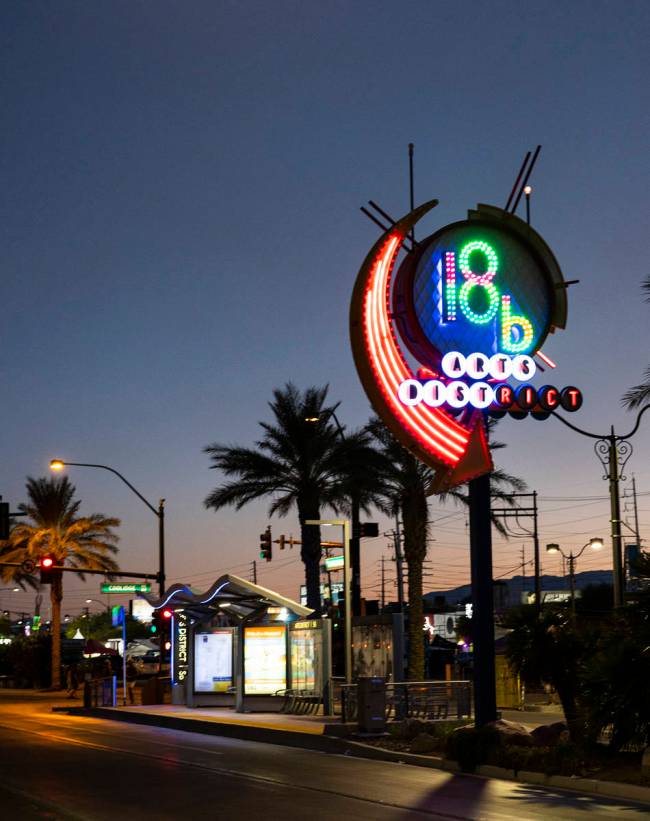
Many of the area’s 150 business license owners were once hungry upstarts like the Blanchards, merchants who weren’t afraid to take a chance and maybe fail, knowing they could rely on a little help from neighboring shopkeepers. They wanted to create a community right there in the shadow of the corporate-minded, sharp-elbowed Strip, whether it was selling clothes or antiques, cutting hair, making art, launching a women’s empowerment center or opening a restaurant.
Over the years, they have fostered a unique spirit — an impromptu welcome wagon of sorts — in which established residents reach out to greet the new. “I call it that old-fashioned plate of cookies,” said Marc Abelman, co-owner of Inside Style, a home furnishings store, and a former executive director of the 18b Las Vegas Arts District board of directors. “You send over that plate of cookies to welcome a new neighbor. People did it for me, and it’s what I do for others.”
The Blanchards felt the love right away. “For us, the Arts District just had that be-yourself motif,” Sean said. “You’re in the heart of the city, but there’s a strong sense of community. The place just feels special.”
In 2019, the Blanchards opened a shop on South Commerce Street, selling an eclectic mix of men’s and women’s clothing, jewelry and artistic home decor. At first, they weren’t sure what to call it. Finally, Lisa suggested “The Good Wolf,” to reflect their goal of helping foster a tight-knit business fraternity. The name derives from a parable about a Native American elder instructing his grandson about the two warring wolves that exist inside all of us — one representing kindness, bravery and love, and the other greed, hatred and fear.
“Which one wins?” the boy asks.
The old man answers, “The one you feed.”

Alli Creagh, who owns Alley Fitness, began following the Blanchards on Instagram. “I could tell they had that passion to leave the corporate world and start something for themselves, just like me,” the Pilates instructor said.
One day she introduced herself. Soon, she was buying clothes at The Good Wolf, and Lisa Blanchard began training at her gym. The Blanchards also met other refugees from corporate America, including Dane and Marissa Pretkus, who abandoned local careers in the gaming and bar industries to start a mobile bartending service.
After Dane nearly died from a ruptured appendix while bartending on a graveyard shift, the couple reassessed their goals. They bought a Western-style trailer with paneled walls, which they used to launch Local 808 Events, a venture that sold drinks at parties and events. They soon met the Blanchards, who urged them to open their own neighborhood bar. The Pretkuses eventually opened the Horse Trailer Hideout, a Western-themed speakeasy.
“We wouldn’t have this bar without Sean,” Marissa said. “He encouraged us to take a chance. We talked numbers, looked at ourselves, and asked, ‘Could we do it?’ ”
Not only that, Sean walked the couple over to the Jeep owned by Alli Creagh’s husband, Gary, who owned a few local properties. He knocked on the window and said, “My friends want to open a bar here. Can you help them find the right spot?”

“Sure,” Gary said. “Hop in the Jeep and let’s take a ride.”
For the bar’s opening night, local art dealers lent them buffers for their floors; a pizzeria owner sent food. As a way to pay such courtesies forward, the couple hang work from local artists on their walls and allow independent food trucks to park in their rear courtyard.
As Marissa tells this story, she’s also moving furniture. A guy named Kyle, who works in a nearby gallery, moonlights as a hairstylist and began cutting Marissa’s hair. That day, he was moving into a new apartment and she took off time to help. She’s encouraging him to open his own shop.
*
These days, Arts District tenants need to look out for one another more than ever. The neighborhood is witnessing a development explosion that some worry might change the grassroots foundation on which the community was built. Artists have been sidelined by rents that in some cases have quadrupled in recent years. Rather than renting space to scrappy dreamers, new real estate investors are holding out for lucrative brewpub and restaurant ventures. Many here wonder whether the place they consider Las Vegas’ best-kept secret has been unceremoniously outed, put on the market to the highest bidder.
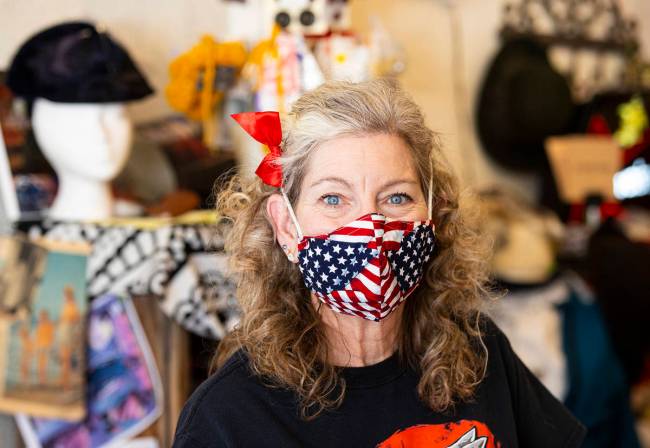
“In Las Vegas, it’s usually one person or a corporation, or a couple of huge developers, coming in and throwing their money around and making things happen, but the Arts District flourished in a polar opposite way — by individuals,” said Becky Miller, an area pioneer who owns several properties, all rented to small businesses. They give the neighborhood an aura of character and colorful authenticity many say is in short supply over on the Strip. “The money people all want that teenage-girl glitz,” Miller added. “Well, in the Arts District, we’re the 50-year-old ex-casino cocktail waitress now slinging drinks at the local bar. We’re not glitzy. We’re real.”
In the early days, before the downtown neighborhood had anything to do with art, urban risk-takers here often carried a gun for protection. The area oozed a grit that stayed under your fingernails, with enough crime to make you look over your shoulder. In the postwar years, the area was a bustling industrial complex of big-shouldered, blue-collar enterprises: sheet metal shops, salvage yards, garages, furniture warehouses and home-construction retailers.
By the late 1980s, the area was a husk of its former self, with abandoned, graffiti-covered warehouses and routine break-ins. Miller began helping a friend find tenants to move into these buildings, using a surefire lure of cheap rents and a you-can-do-anything spirit. By the early 1990s, the area was re-emerging as a funky bohemian neighborhood. That’s when a photographer named Wes Isbutt purchased a former light-industrial warehouse at Main and Charleston, christening it the Arts Factory, a multi-unit hive of artists’ studios, galleries, and creative businesses.
Artist Jerry Misko was one of the original tenants, opening a studio near such rebel ventures as a gay cowboy bar and swingers club. On the way to work, he’d be accosted by streetwalkers and crack dealers. “At night, we’d stand on the roof of the Arts Factory and watch the guys driving BMWs get rolled while buying dope from hustlers in the back alleys,” Misko said. “We became friends. We threw great events, parties, art shows.” He later co-owned the fondly remembered Dust Gallery on Main Street.
In 1998, area shop owners organized to launch the 18b Las Vegas Arts District development board. Four years later, Cindy Funkhouser, Julie Brewer and Naomi Arin launched a monthly arts festival called First Friday, during which galleries stayed open later on the first Friday of each month. The event has remained an Arts District fixture, now drawing thousands at a time.
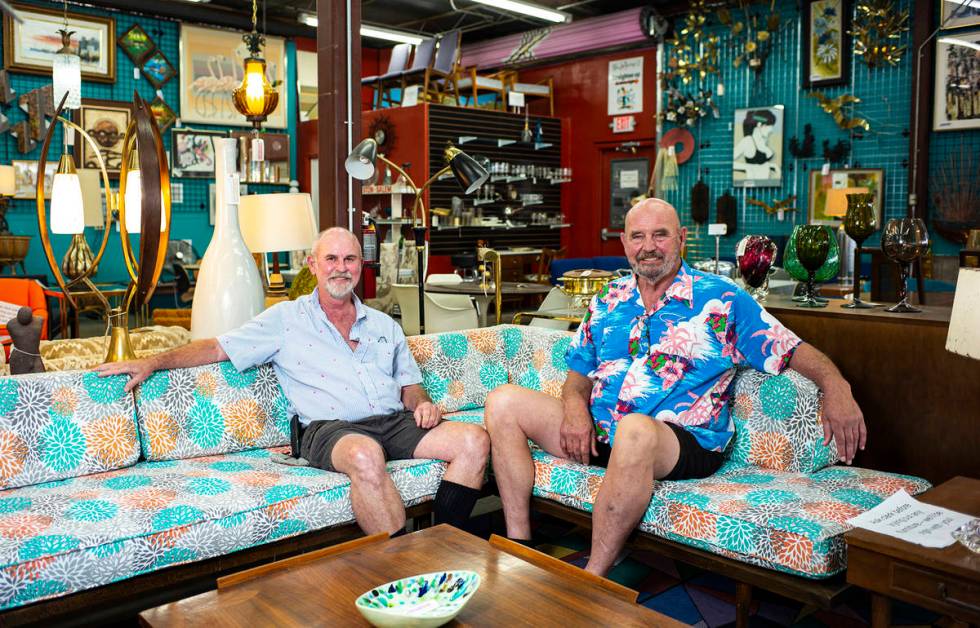
But along with boom comes bust. Some merchants failed after the 2008 economic crash, while others barely hung on. That’s when Bill Johnson and Mark Comstock opened their Vegas antiques store. “What we liked right away was having the freedom to be creative,” said Johnson. “Even though the building was in rotten shape, it was a blank canvas.” Looking toward the post-crash future, the partners promoted the concept of an antiques alley in the neighborhood, producing a tourist map that even included their competitors.
They recall the time during those dark days that a fellow shop owner walked into their store and announced, “Boys, I made 38 cents today.”
“Well,” quipped Comstock, “that’s 38 cents more than we made.”
*
In more recent years, one newcomer who has recognized the area’s renewed promise is Las Vegas-born chef James Trees. After his career took him to New York, London and Los Angeles, and saw him appear on television cooking shows beside such talents as Gordon Ramsay, Trees came not just to Las Vegas, but to the Arts District. In 2017, he opened Esther’s Kitchen, an Italian bistro named after his great-aunt, who bequeathed him his love for the kitchen. Like a lot of others who came before him, Trees is reinventing himself in the Arts District.
He chose a site on Casino Center Boulevard, moving into a building that was constructed in the 1920s. “Most every city nationwide has a chef like me who came home to open his own restaurant. It’s part of the revitalization of Main Streets all across America,” he said.
Still, people asked him the same question: Why the Arts District? Why not Summerlin or the Strip, places to attract the right kind of clientele. Trees waved them away.
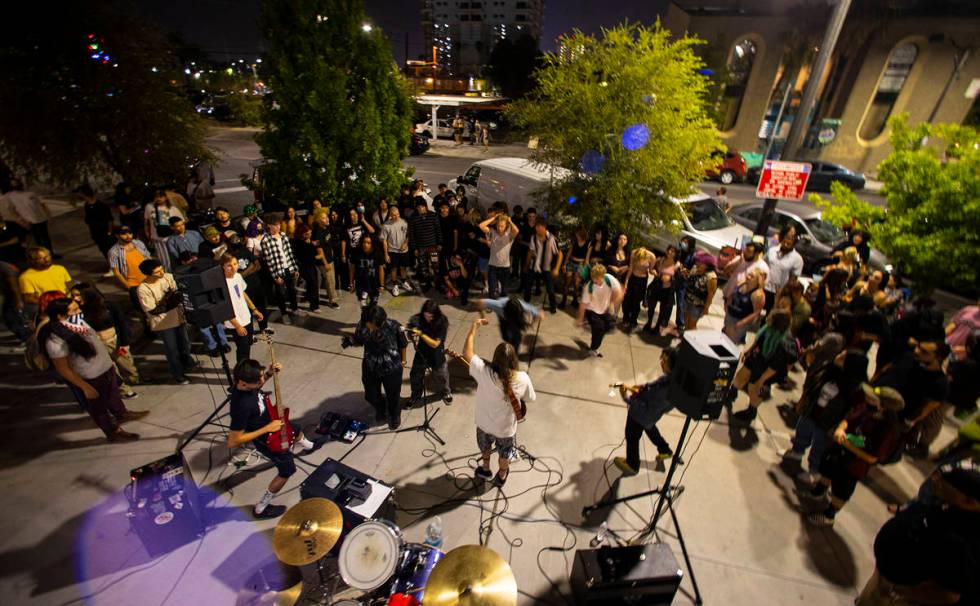
“I said this was a place you can do something that can make an impact,” he said. “Too much of Las Vegas is shiny. They’ve tried to make it like Orange County. But people want reality. And it’s pretty amazing that we have places like this left here. I look at the Arts District and think, this is what the original Main Street in Vegas must have felt like.”
Trees has become one of the neighborhood’s biggest promoters. Many nights at his eatery, he makes the rounds to meet his diners. So, where are you guys going tonight? he asks. And they had better not say the Strip. “I tell people, ‘You’re down here tonight. Stay here because it’s a nice place to be. It’s a real neighborhood with locally owned proprietors. You shouldn’t leave.’ ”
One of his neighbors is Larry Reha, owner of the Makeshift Union hair salon, who had taken residence a year earlier. His business partner thought he was crazy, moving into a building with dirt floors and busted-up walls, ceiling and plumbing. But Reha liked the high ceilings, not to mention the six months of free rent.
Still, he was the only business on the block when Trees arrived, and he welcomed him like a fellow island stowaway. He began to urge Trees to open his restaurant for lunch and not only dinner. “I was just happy somebody was moving in,” he said.
But as often happens in the Arts District, odd relationships bloom.
Reha, a 39-year-old who fronts a honky-tonk band called The Rhyolite Sound, hooked up with the restaurateur’s father, Richard Trees, a veteran songwriter who these days performs in an oompah band called the Oomposters. The two have become odd-couple collaborators. “Richard is cool,” Reha said. “He loves country music. He’s even written a few songs for my band.”
*
Abby Stroot is perhaps the perfect face for the emergent grassroots spirit of the Arts District — real, down-to-earth, a transplanted professional seamstress from Wichita whose pickup still bears its Kansas license plates. Her Pincushion shop does alterations and custom orders for casino shows such as Cirque du Soleil and community theater companies. She also uses her shop to provide a space for creatives such as herself, offering classes and a place to hang out.
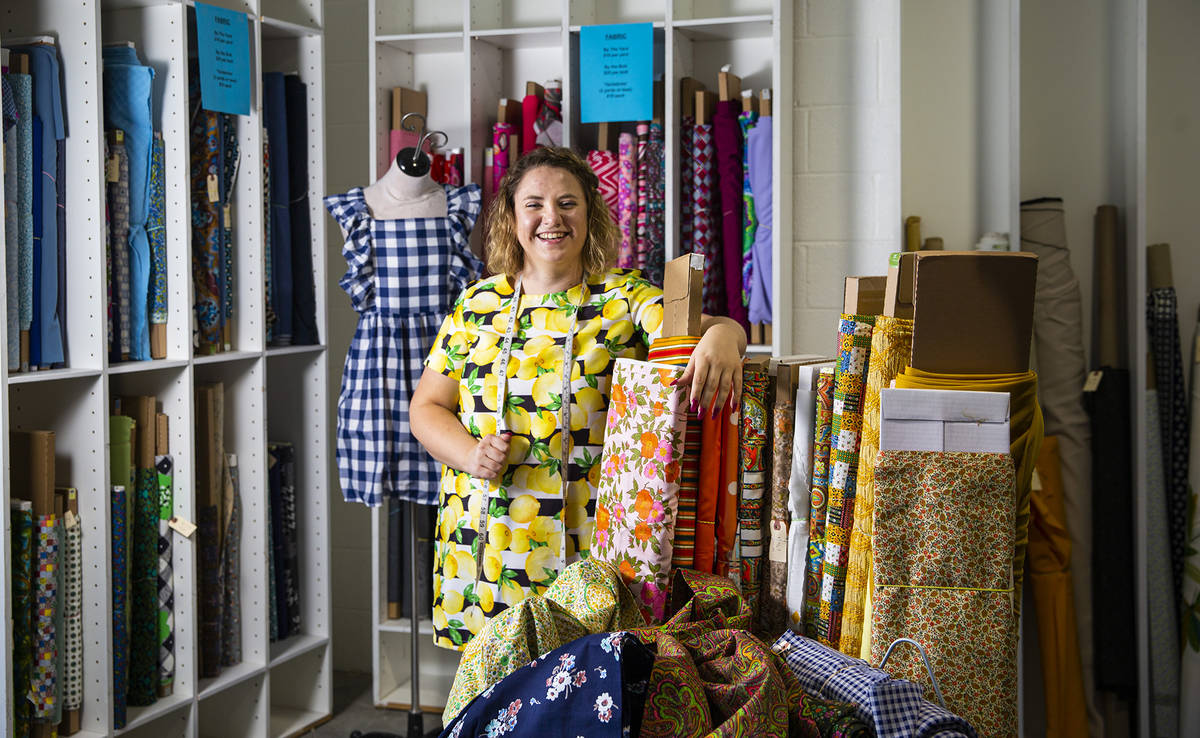
On a recent weekday, the newest president of the 18b Arts District board toured the neighborhood that has embraced her professionally and personally. “What I’m most proud of is that this community has become like a family,” she said. “You know, people looking out for one another.” She passes the Arts Factory, home to some two dozen arty tenants, from graphic designers to a yoga school; outside the building, a mural proclaims, “Bet on Art.” Not far away, Main Street teems with pedestrians.
In June, Kortney Olson chose an attention-getting way to open her Grrrl Clothing store — she set a world record for the fastest time to crush three watermelons between her thighs, finishing in 7.63 seconds. The message: Women can do amazing things. Her shop will empower customers through motivational speakers, jiujitsu classes and breastfeeding seminars. “The vibe is so great,” she said. “The community is big on empowerment, and that’s our brand.”
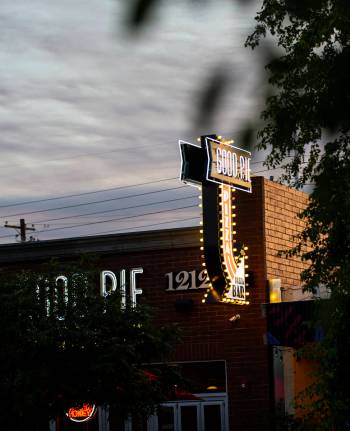
Other newcomers are equally impressed. For months, Darren Lee Cole walked every block of the Arts District scouting locations for an ambitious plan to bring more live theater to the area. The artistic director of New York’s SoHo Playhouse has plans for several new theater spaces that include an outdoor performing arts park.
“The Arts District feels like Soho or Greenwich Village — it’s an organic place that wasn’t manufactured or forced but which has evolved at its own pace,” he said. “The neighborhood goes hand in hand with my kind of theater.”
These days, Stroot is trying to help manage growth in a market that’s becoming increasingly competitive. The goal, she says, is to embrace change without sacrificing the neighborhood’s personal cohesion. She’s frank about the growing pains. Rents are rising, parking is becoming an issue, and more sophisticated newcomers have criticized older tenants for not engaging in enough social media to promote the area.
There’s also worry that an influx of microbreweries might eventually doom smaller tenants. Some people are already calling the area the “Brewery District.” And that saddens artists like Misko.
“Property owners are holding out for the big rents,” he said. “I was driving down Main Street the other day, and all the ‘For Lease’ signs were targeting bars and restaurants. At the end of the day, art isn’t as profitable as food and alcohol. How are those people going to survive?” Misko himself had to move his studio out of downtown in search of affordable rent.

Longtime landlord Miller put it more bluntly. “There doesn’t seem to be any way to stop this runaway growth,” she said. “The Arts District has made itself too tasty a morsel for the Las Vegas money crowd. And now we’re paying for it.”
Former Arts District board director Marc Abelman supports a Business Improvement District to ensure artists will always have a home in the area. “Growth pushes people out, and that’s a huge concern to me,” he said. “The arts are what has given us our personality. We can’t lose that. We can’t become something we’re not.”
Chef Trees believes the definition of the Arts District is changing. “Art isn’t just paint on the wall or oil on canvas,” he said. “There’s a broader definition. Cooking is art. Stand-up comedy is art. Theater is art. We need to support the artists that are already here but be open-minded about what’s to come.”
Sean Blanchard said The Good Wolf is doing its part. He participates in the weekly farmers market in the parking lot outside his shop and hosts a regular cars and coffee get-together.
Blanchard grew up as a surfer dude, so he watches the future approach his chosen neighborhood like an incoming wave. “You just have to have your foot in both oceans, the past and the future,” he said. “You have to appreciate what brought us all here, but be ready for the next swell.” Then get up and ride.
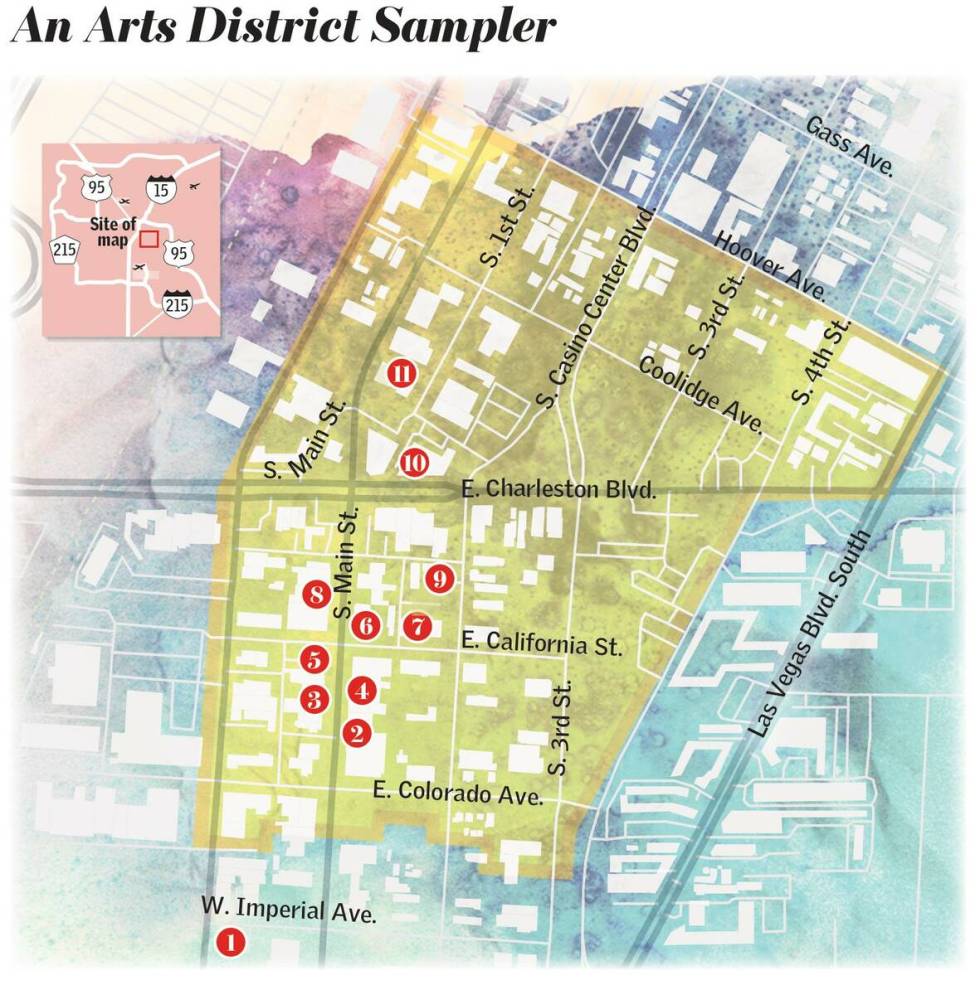
An Arts District Sampler
1. The Good Wolf Lifestyle Co.
1401 S. Commerce St. Clothing and accessories, home wares, personal care items and more. the goodwolflv.com
2. ReBar Las Vegas
1225 S. Main St. Drinks, food in eclectic setting; live music, trivia. rebarlv.com
3. Velveteen Rabbit
1218 S. Main St. Craft cocktails, beers amid local art, plus "magical pink outdoor patio." velveteenrabbitlv.com
4. Majestic Repertory Theatre
1217 S. Main St. Theater troupe focusing on immersive plays. majesticrepoertory.com
5. Casa Don Juan
1204 S. Main St. Popular post-First Friday destination. casadonjuanlv.com
6. Retro Vegas
1131 S. Main St. Antiques, furniture,
accessories, particularly in mid-mod styles. retro-vegas.com
7. Esther's Kitchen
1130 S. Casino Center Blvd No. 110. Seasonal Italian cooking by chef James Trees.estherslv.com
8. Makers & Finders
1120 S. Main St. No. 110. Specializing in coffee and Latin food. makerslv.com
9. Vesta Coffee Roasters
1114 S. Casino Center Blvd. No. 1. Popular hangout for coffee-loving creatives. vestacoffee.com
10. Arts Factory
107 E. Charleston Blvd. Aggregated galleries, studios and creative businesses, from yoga to hair. theartsfactorylv.com
11. Burlesque Hall of Fame
1027 S. Main St. No. 110. Spotlighting a vital Las Vegas art form.burlesquehall.com












